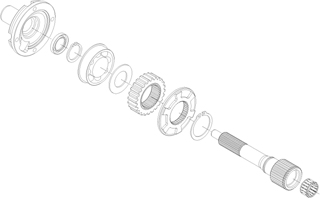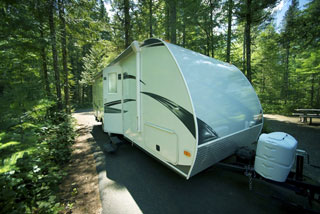RV Fresh Water Pump Noise
Most RV’s are equipped with a fresh water storage tank and a on demand fresh Water Pump , which provides satisfactory service for most RV’ers. A common complaint is the noise and vibrations associated with the pump usage. Newer recreational vehicles are very susceptible to this problem, because most newer RV fresh water supply plumbing is manufactured with Pex Tubing. This tubing has many advantages, but this tubing is very rigid and tends to chatter, because it cannot absorb the on demand pump pulsations and vibrations, resulting in a “hammering” type sound emitting throughout the RV.
Installing flexible Braided Hose at the water pump inlet and outlet will reduce these noises considerably. Installing a inline Accumulator Tank at the pump outlet pressure port is very effective at reducing pulsating noise and eliminates short cycling of the pump.
The best alternative is to replace the old style pressure activated pump with variable speed Flojet Pump. This modern pump utilizes a water flow sensor instead of a pressure switch. The flow sensor enables a variable water pump motor speed for precise water flow control determined by the water demand required. This pump is very efficient and requires lower battery amperage draw.



